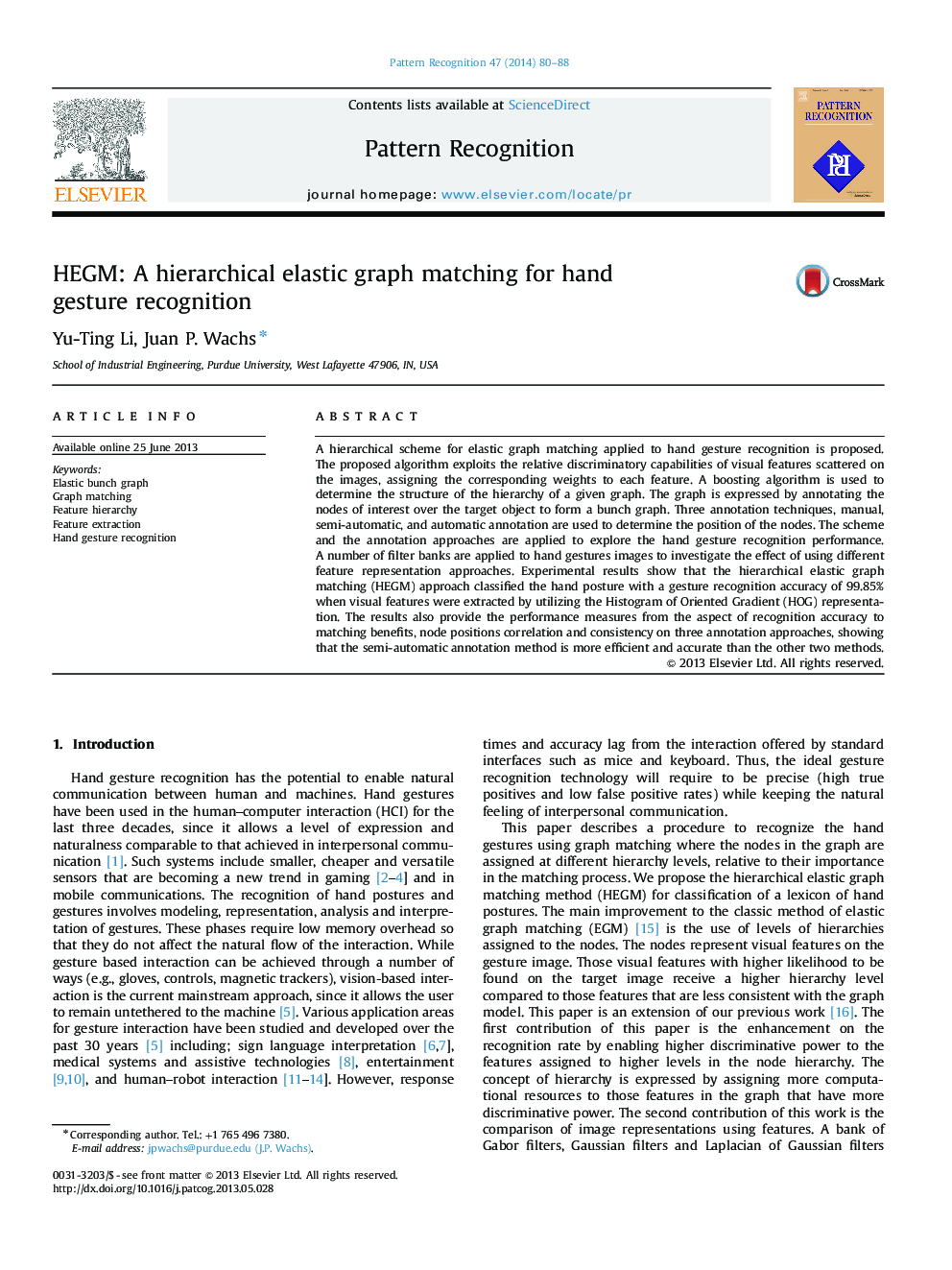| Article ID | Journal | Published Year | Pages | File Type |
|---|---|---|---|---|
| 532106 | Pattern Recognition | 2014 | 9 Pages |
•The HEGM algorithm classifies hand postures with 99.85% recognition accuracy.•Elastic graph nodes′ weights reflect power of inter-class discrimination.•Using hierarchy level information enables substantial computing cycles saving.•An innovative semi-automatic annotation technique allows fast graph creation.
A hierarchical scheme for elastic graph matching applied to hand gesture recognition is proposed. The proposed algorithm exploits the relative discriminatory capabilities of visual features scattered on the images, assigning the corresponding weights to each feature. A boosting algorithm is used to determine the structure of the hierarchy of a given graph. The graph is expressed by annotating the nodes of interest over the target object to form a bunch graph. Three annotation techniques, manual, semi-automatic, and automatic annotation are used to determine the position of the nodes. The scheme and the annotation approaches are applied to explore the hand gesture recognition performance. A number of filter banks are applied to hand gestures images to investigate the effect of using different feature representation approaches. Experimental results show that the hierarchical elastic graph matching (HEGM) approach classified the hand posture with a gesture recognition accuracy of 99.85% when visual features were extracted by utilizing the Histogram of Oriented Gradient (HOG) representation. The results also provide the performance measures from the aspect of recognition accuracy to matching benefits, node positions correlation and consistency on three annotation approaches, showing that the semi-automatic annotation method is more efficient and accurate than the other two methods.
